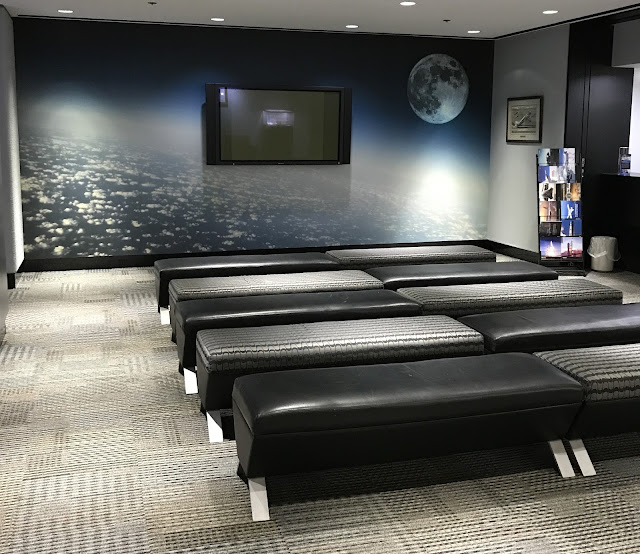St. Louis, MO 63135
Admission and parking are free.
http://www.boeing.com/company/tours/prologue-room.page
The Prologue Room Museum is located on the first floor of Building 100 on the Boeing campus.
From the minute you walk in the museum you realize that this one-room exhibit is full of models and more models!
A trip through the museum takes one on a walk through the history of air and space travel as led by the McDonnell-Douglas and Boeing corporations.
The slide rule on display is a reminder of how far science has come.
This timeline is a wonderful display.
These 1924 World Cruisers built by Douglas for the U. S. Army Air Services were the first aircraft to fly around the world.
This F-4 Phantom II was first flown in May 1958.
The first jet in the Boeing commercial jet series was the 707 built in 1957.
In 1926 women on the production line of the U.S. Navy's first fighter plane designed for a carrier, "dressed up" for work!
Full-scale cockpit seats in a commercial jet.
Each jet model has its own seating configuration as was shown in these models.
The new entryway on the 2011 787 Dreamliner.
In 1938 the Boeing 314 Clipper provided this dining salon and other luxuries for cross-Atlantic travel.
A portion of the museum is devoted to the space program.
This is one of several pictorial displays showing the history of the companies.
In 1926 women on the production line of the U.S. Navy's first fighter plane designed for a carrier, "dressed up" for work!
There are great examples throughout the museum of seating on aircraft. This seat is from a F-4 Phantom II used by the military 1958-1991.
Each jet model has its own seating configuration as was shown in these models.
In 1938 the Boeing 314 Clipper provided this dining salon and other luxuries for cross-Atlantic travel.
The museum is filled with hundreds of scale model airplanes.
This is a full-size mock-up of the Mercury.
These are pictures from the Mercury program.
There is also a section on the Gemini space program.
This section includes this full-scale mock-up.
A large picture showing the spacewalks in the Gemini program is among the pictures on display.
Small models (1/100 scale) of the rockets used to boost the spacecrafts into the atmosphere are on display: Apollo-Saturn V Rocket, Gemini Spacecraft Titan Rocket, and Mercury Spacecraft Atlas Rocket.
The M47 Dragon missile was first produced in 1975.
This explanation of the Dragon is representative of the many signs found with the displays.
Comments: I would definitely recommend this museum. The museum is probably one of St. Louis's best kept secrets. Many residents don't know of its existence perhaps because it is only open to the public for self-guided tours three months of the year. Although tours are available year-around, the other nine months it caters only to student groups and to adult groups of ten or more. We went on a self-guided tour but as with most museums a guided tour would have been great. The guided tours take about one hour.
There were touch screen kiosks throughout the museum and with no directions for use we wondered why they were there. Afterwards I read on the website that they were for our use. I also read about many other items we totally missed - i.e. full-scale models of a Harpoon radar-guided missile, a JDAM smart weapon, and a small Diameter bomb. A guided tour definitely would have been helpful in seeing what all was there. There are so many models it is a little overwhelming.
I called two days before our planned visit and inquired about scheduled group tours. We thus arrived between the two groups and had the museum to ourselves. We spent about 45 minutes wandering through the exhibits on our own. There was a group in the film theater when we arrived so we watched our film afterwards when there was no one using that area.
One can ask to see the films that are available on a variety of topics. Several of the films are geared toward children/students. We chose to watch an 8-minute film about the history of the space program.
We enjoyed seeing the models and exhibits. We lived through so many of the events that the exhibits brought back fun memories of "where we were when." We found different ways to personally relate to many of the models.
There is no gift shop there but I learned after I got home that there is a gift shop/store on the Boeing campus in a different building. A visit to the Prologue Room gives you 10% off at the store which is also online: https://www.boeingstore.com/ The store sells many items.
After visiting the museum we drove 1 mile to 3 S's Bistro which was highly recommended on online reviews. You order at a counter and then they bring you your food. The menu had a number of choices. We all ordered a 3-item lunch and the food was good but not spectacular.


















































